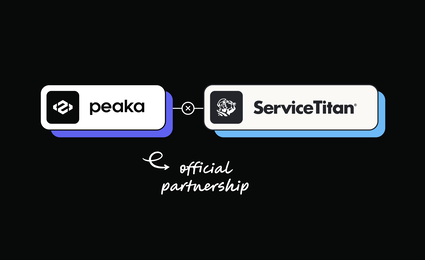
Connect ServiceTitan with QuickBooks or Xero using Peaka and visualize your data in Power BI, Looker Studio, or Tableau—no manual exports needed.
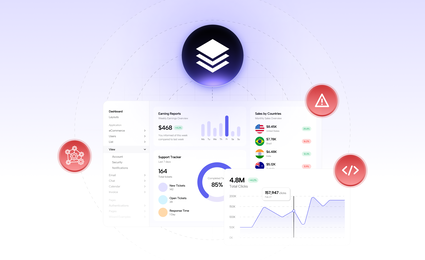
Embedding a BI capability inside your product can be quite a challenge. We take a look at the top 6 mistakes SaaS teams make while chasing this goal.

Learn how modern SaaS companies can embed customer-facing analytics inside their products—without building complex data infrastructure.

Achieving SOC 2 Type 2 compliance is an important milestone for a B2B company. Read on to learn what this means for Peaka and our users.

What are your options for integrating ServiceTitan with other data sources? Find out more about the best tools for the job and how Peaka compares to them.

What if you could visualize your ServiceTitan data with Metabase without a data warehouse or data pipelines? Read on to find out how.
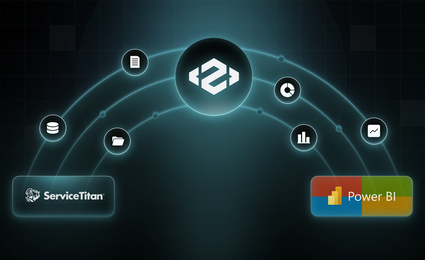
Go beyond what ServiceTitan’s built-in dashboard offers. Use Peaka to integrate your home services CRM with Power BI.

If you have tried to view your ServiceTitan data in Looker Studio but failed, rejoice because Peaka makes it a breeze to connect these two platforms.

Avoid buyer’s remorse with this detailed comparison of top data integration platforms. Learn about their pros, cons, and pricing plans before you commit.

Peaka’s Tableau integration combines innovative data integrations with dazzling data visualization capabilities.

Peaka’s Looker Studio integration allows even non-technical users to turn their data into visualizations without hassle.

With Peaka’s Power BI integration, you can pull in and join data from distributed sources, turn your data into reports, and share it with others.

Peaka’s Apache Superset™ integration allows this platform to pull in and visualize data from a wider range of data sources, including SaaS tools.

With Peaka’s Metabase integration, you can connect Metabase to more data sources, including SaaS tools, and turn your unified data into visualizations.

Peaka’s new connector for Provet Cloud, a vet practice management software, extends this platform to integrate with all data sources at your disposal.

A detailed analysis of post-M&A data migration projects, their challenges, current best practices, and how data virtualization can help simplify them.

A deep dive into data migration in healthcare, challenges involved in data migration projects, and best practices to follow.

Find out about our lessons learned from SaaStock USA 2023 and what you can expect to see from Peaka in this year’s event.

Discover what data migration is used for, the benefits it offers, the challenges involved, along with the most popular data migration methods.

As each company uses a different tech stack, building an integration infrastructure has become a must for businesses. Here’s how you can get started.

Data integration allows you to easily combine various data sources to make informed decisions, improve efficiency, and gain a competitive edge.

To choose the best enterprise data warehouse, consider your requirements. Evaluate the pros and cons of cloud and on-premise deployment.

SaaS gurus think that a Product Hunt launch does not justify the time and effort needed from B2B companies. Here’s why our experience says otherwise.

Try these data replication strategies to make better business decisions. Automatically transfer pertinent information to easily compare and analyze data.

Automated data processing compiles, analyzes, and shares data, making your company more efficient by freeing up your time to handle critical tasks.

Most founders are unaware of the need to establish a pipeline for analyzing and cross-referencing engagement data. We've offered a modern alternative.

Explore the evolution of data integration architecture, from traditional ETL to real-time, event-driven models.
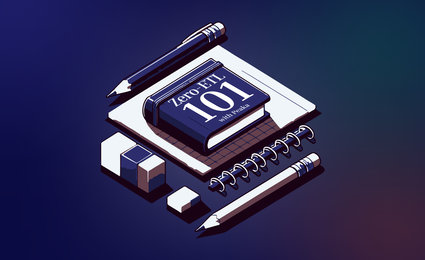
Zero-ETL eliminates time-consuming ETL processes, making data access and analysis easier than ever before.

Explore the best 25+ SaaS BI and analytics tools. Learn how they give you visibility into customer journeys, product usage, and financial performance.
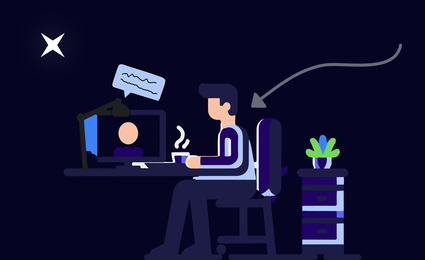
Many founders neglect lean principles while interacting with customers, often focusing too much on customer support. We’ve explored a healthier way.

"Framework” founders often overcomplicate product vision and fail during Pre-PMF. We delved into the fundamentals and proposed an alternative way.

In this article, we listed the benefits of data integration. Visit our website to read and learn more about data integration!

Uncover the secrets of a cutting-edge data infrastructure in our informative blog which answers the question of what is the modern data stack.
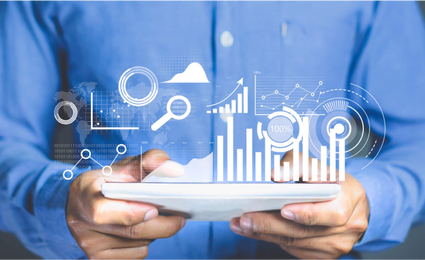
Dive into our blog for essential insights on tracking and optimizing key performance indicators for your SaaS business.

Discover proven tactics and innovative approaches to drive lead generation and business growth in our comprehensive B2B inbound marketing strategy blog.

What is a Logical Data Warehouse? Why do we need one? How does it work with technologies like data virtualization and AI? Find out in this blog post.

This guide breaks down the most important SaaS growth metrics for founders, growth teams, and marketers looking to drive sustainable growth.

An evaluation of ChartMogul as a SaaS analytics tool, its strengths and weaknesses, and how it compares to competitors, including Peaka.

A complete guide to SaaS sales KPIs. Learn how to calculate and apply the best metrics and KPIs for your sales pipeline.

SaaS analytics refers to the way SaaS companies track, bring together, and analyze their data to make better decisions. Find out how they can help you.

How do you create an ideal customer profile (ICP)? Why should a SaaS company create one? How does Peaka help you hone your ICP? Find out in this blog post.

Here is everything a SaaS founder needs to know about account-based marketing, how it works, its benefits, and how Peaka can help ABM teams implement it.
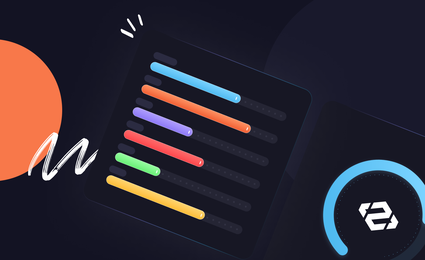
A deep dive into SaaS revenue metrics, four data integration tools to track SaaS revenue, and benefits of blending your revenue data with your CRM data.

The first step in account-based marketing is to consolidate and turn your data into metrics. Peaka’s HubSpot-Stripe integration helps you do just that.

What do companies stand to gain from building network effects into their products? This blog post lays out three major benefits of network effects.

Click to read a detailed review of Talk to your F****ing Customers, by Steli Efti.

Products and services leveraging network effects have been shaping our lives for years. This piece explains the three types of network effects.
We take a look at the collapse of Silicon Valley Bank and the initial takeaways founders should keep in mind.
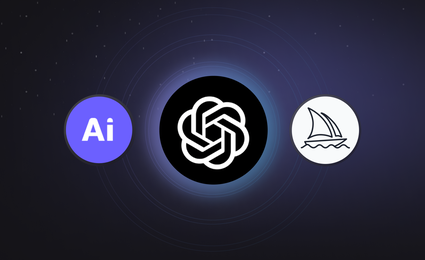
Can generative AI give hard tech projects a boost? We explore three generative AI use cases for scientists and entrepreneurs.

Microservices architecture offers flexibility in software development. Joy Anderson explores its challenges and suggests solutions.

Click to read a detailed review of Superconsumers by Eddie Yoon.

Is generative AI the real deal or just a fad? We explore VC interest in generative AI startups and highlight a potential dark horse within the field.

Common misconceptions about data integration receive special attention in this blog post. Join Kelly O’Connor as she goes on some myth-busting.

Is zero-ETL the ultimate data integration solution, or does it promise more than it can deliver? Read on to understand zero-ETL and its pros and cons.

What’s the biggest obstacle to implementing self-service data integration? Read on to see how data virtualization can be the breakthrough we need.

Click to read a detailed review of The Alliance by Reid Hoffman, et al.

What causes data silos? How do they undermine organizations? Are there any novel ways of tackling them? Find out in this blog post.

A comprehensive post analyzing the relationship between the tech layoffs in 2023 and the hiring decisions made during the pandemic.
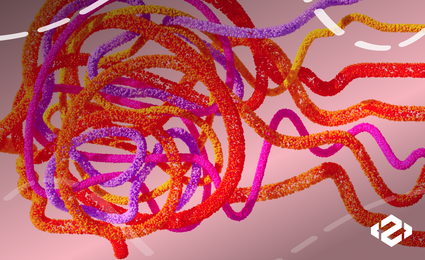
AI's growing presence in our lives creates new problems for us. This blog post discusses three pain points and their solutions.

AI will be a massive help to data professionals in the future. Here are three use cases where AI can deliver the goods without breaking a sweat.

Click to read a detailed review of Rocket Surgery Made Easy by Steve Krug.

An analysis of four major developments that took place in 2022 and what they might mean for the near future trajectory of the industry.

What kind of Web3 projects are investors backing these days? Read on for three use cases that keep the money flowing into the Web3 domain.
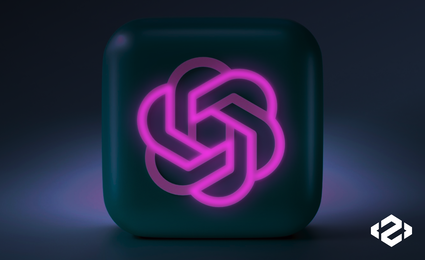
We look into what makes ChatGPT better than its predecessors and how it can transform certain fields.

A deep dive into the challenges hard tech startups face and how founders can overcome them.

Click to read a detailed review of Play Bigger by Christopher Lochhead, Al Ramadan, et al.

Hard tech startups attract a lot of attention nowadays. This post explores the reasons behind this heightened interest.

Africa is viewed as the next tech frontier. We think no-code technology can solve Africa's chronic problems and kick-start its tech revival.

Investors can ask founders unexpected questions during a meeting. This piece covers three of them and the rationale behind them.

Can angel investing survive the current economic turbulence? We explore the challenges awaiting angel investing and the ways to tackle them.

Will angel investing be a field that AI and ML will transform? This blog post discusses to what extent algorithms can benefit angel investors.

Click to read a detailed review of The Cold Start Problem by Andrew Chen.

An angel investor can offer more than just money to a startup. We discuss the skills and connections top angel investors bring to the table.

How can some angel investors consistently pick better startups while others can't? Find out in this blog post.

A comprehensive discussion of whether angel investors prioritize bright ideas or the right group of people while assessing founders.

An in-depth discussion of what motivates angel investors, whose hands-on approach separate them from institutional investors.

A blog post on how no-code can facilitate digital transformation for deskless workers such as construction workers and truck drivers.

Click to read a detailed review of Zero to One by Peter Thiel.

Ecommerce APIs give businesses an advantage over their competitors. Find how the top 6 benefits of using ecommerce APIs for your online business.

Forget about data warehouses: Peaka CEO Mustafa Sakalsız explains why data virtualization is the ideal data integration solution for startups and SMBs.

Startups struggle to compete with established companies. Chatty Garrate suggests using no-code/low-code tools to achieve multiple goals at once.

Data warehouses alone are no longer sufficient for modern enterprises. Enter data mesh: A product-oriented, domain-focused, self-serve solution.

Click to read a detailed review of Just Enough Research by Erika Hall.

What’s the best way of handling data, through ETL or ELT? This blog post takes a look at both methods and their respective strengths and weaknesses.

A long, hard look at what unstructured data is, its potential use cases, and the associated challenges.

Wanna learn what you can do to improve the data quality at your organization? Bruce McFadden shows you the way.

You can spot good data from a mile away because it has distinct qualities. Read on to learn about the six aspects of data quality.

Data management is a significant challenge but it’s nothing new. Join Kelly O'Connor to explore how people organized their data throughout history.

Click to read a detailed review of Obviously Awesome by April Dunford.
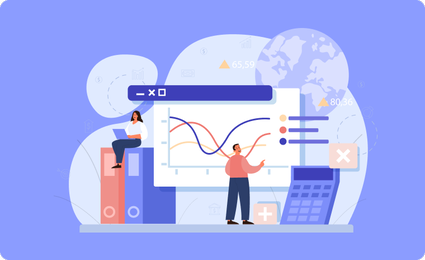
Valuing pre-revenue startups is tricky due to the lack of financial data. We explore three creative ways to put a price tag on micro SaaS startups.

Selling a micro SaaS business is a solo endeavor. This post examines marketplaces for buying and selling micro SaaS startups and the risk factors.

Micro SaaS startups shun venture capital. But what if they need funding? In this piece, we lay out a creative alternative for micro SaaS founders.

Micro SaaS businesses are ready to reap the benefits of being self-reliant and independent in the face of a looming recession in 2022.

Some founders keep their startups small and private instead of scaling up. We look into why people build micro SaaS businesses.

Click to read a detailed review of How Open Source Ate Software by Gordon Haff.

Despite some initial resistance, financial organizations have finally embraced open-source projects. Here is an overview of the projects they use.
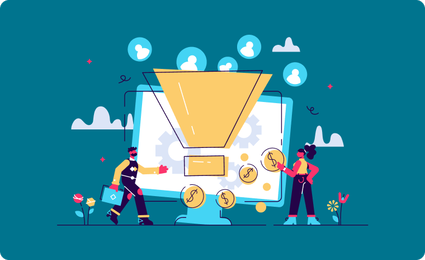
Can open-source projects make money without sacrificing their values? Find out in this blog post.

Most open-source projects are maintained by small teams of volunteers. Read on to see what’s going on behind the scenes in open-source projects.

Picking the right open-source license is a strategic decision. Read on for an overview of licenses and their impact on the project's future.

Big tech companies no longer fight open-source but compete to make most of it. Cloud and AI-focused companies now support open-source projects.

Click to read a detailed review of Move Fast and Break Things Jonathan Taplin.

Big tech companies have started investing in open-source to adapt to the changing landscape. What changed? Find out in this blog post.

This blog post sheds light on the motives of developers contributing to open-source projects and what they stand to gain from such initiatives.

Chatty Garrate offers a detailed assessment of the seven most popular NFT marketplaces and how they work.

Website Planet sat down with Peaka CEO Mustafa Sakalsız for an interview. Read on for a peek into Sakalsız's vision for the future of the company.

AI technology has fallen short of expectations. This blog post points to a bottleneck in the job market and explores how no-code can help overcome it.

Click to read a detailed review of The Automatic Customer by John Warrillow.

Subscription-based businesses often struggle to survive. We examine three once-beloved ventures that failed to deliver on their promises.

The subscription model doesn't guarantee startup success. This article reveals proven strategies for successful subscription businesses.
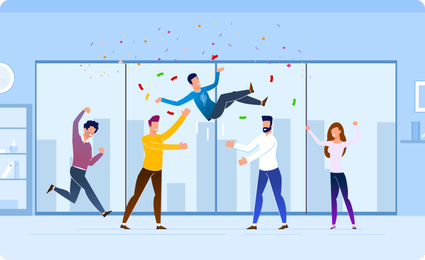
Peaka's latest app template, Employee Directory, helps easily startups manage personnel info and improve harmony at work.

SaaS is a lucrative business model. This blog post traces its origins and explains why SaaS companies have adopted them as their go-to approach.

This piece takes a look at B2X, a hybrid of B2C and B2B, which has attained considerable success for companies like Atlassian, Notion, and Slack.

Click to read a detailed review of Life after Google by George Gilder.

This blog post discusses how no-code can help broaden the talent base and ease the burden on developers at a time when developers are scarce.

Zapier's recent report examines the pandemic's effect on no-code adoption, common issues for no-coders, and their tool usage frequency.

This piece gives an account of what motivates people to become digital nomads and the challenges of this particular lifestyle.

Peaka's new app template, Pronto Q&A, helps startups build community boards, facilitating the preservation and transfer of know-how.

With the pandemic subsiding, the job market is active. Peaka's JobPointer template helps users create a job marketplace to meet the growing demand.

Click to read a detailed review of Crossing the Chasm by Geoffrey A. Moore.

Exploring the NFT frenzy, this blog post discusses the practical uses of NFTs and unveils NiftyExpo, Peaka's new template for NFT collectors.

TaskAce, Peaka's new task management app template, is a simple and smart solution for small businesses looking for a no-frills tool.

BrandBoost, Peaka's new app template, helps brands and influencers find the right partners for successful social media campaigns.
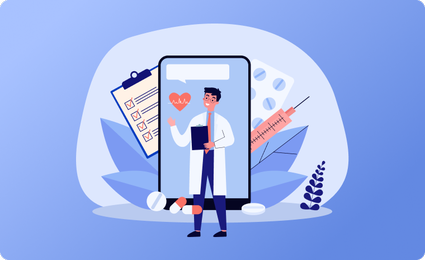
PrestoMD, Peaka's new app template, simplifies medical appointment scheduling, reducing stress for everyone involved.

Peaka's CivicRebel template lets users create online petitions with ease, empowering them to initiate change, just like Change.org has done.

Click to read a detailed review of Traversing the Traction Gap by Bruce Cleveland, et al.

Can blockchain offer a solution to our democratic crisis? This piece takes a look at the concept of "liquid democracy," analyzing its pros and cons.

A blog post on some of the most common voting mechanisms used by Decentralized Autonomous Organizations (DAOs), analyzing their pros and cons.

We take a look into four of the most popular subjects of 2021 and reflect on what we may expect to see in 2022 regarding each of them.

This piece offers an in-depth comparison of Initial Coin Offerings (ICO) and Venture Capital (VC). Read on to see how VC firms kept up with the times.

This piece sheds light on what Decentralized Autonomous Organizations (DAOs) mean for the investment landscape and the VC companies.

Click to read a detailed review of Jobs to Be Done by Anthony W. Ulwick.

Which city will be the Mecca of the Decentralized Autonomous Organization (DAO) economy? Read on to see the likely candidates.

In this blog post, we look into a few use cases where Decentralized Autonomous Organizations (DAOs) might come in handy.

Wanna produce proof of identity at will or carry your credit history with you wherever you go? Here is how blockchain can shape your future.

In this piece, we take a look at the conditions that set the stage for the emergence of Web 3.0, a supposedly revolutionary technology.

Templates offer practical solutions to common problems. Startups can use them to grow faster and stay ahead of their competition.

Click to read a detailed review of The Innovator's DNA by Clayton M. Christensen, et al.

Startups can gain a competitive edge by utilizing no-code templates. Read on for a discussion of the pros of using these tools.

Software developers are quitting their jobs in droves. We explore the Great Resignation to see whether this signifies a bigger transformation.

A discussion of how no-code templates extend your software, build an ecosystem, and unlock indirect network effects for a competitive advantage.

An account of how open banking and DeFi leverage APIs to change the landscape in finance, making it easier for masses to access products and services.

Customizability is a powerful feature for building software ecosystems. APIs and no-code tech are how ecosystems are built nowadays.

Our CEO Mustafa Sakalsız explains how APIs can help software reach its potential and grow an ecosystem around itself.

Click to read a detailed review of Founder’s FAQ by İlker Köksal.

How do you find the right HR software for your company? This blog post suggests 7 rules of thumb you should follow while shopping for HR software.

From hiring to payroll, these HR platforms are perfect for fast-growing startups. Compare features, pricing, and use cases.

A comprehensive piece on of Human Resource Management (HRM) and the role of HRM software in streamlining key HR functions, along with its benefits.

This post discusses how no-code can facilitate front-end composability and announces the partnership between Peaka and Prime.

Click to read a detailed review of Delivering Happiness by Tony Hsieh.

Can we rethink legacy monolithic systems as packages of workflows and processes? We explore how microservices and APIs can enable this transformation.

A deep dive into successful digital transformation initiatives and five key points for improving the odds of digital transformation success.

In this piece, we explore the three main reasons digital transformation initiatives fail, focusing on management's responsibility.

When your team hits a fork in the road, should you start fresh or improve old code? This post highlights how no-code can help restore old projects.

Developer shortage is driving the growth of no-code. Traditional coding is essential for complex projects, but no-code will democratize software.

When customers request features that don't align with your product roadmap, what do you do? No-code platforms offer a way out of this dilemma.

No-code is a practical alternative to coding for those who cannot afford the time and effort. It is the just right amount of code for most people.

Click to read a detailed review of The Product-led Organization by Todd Olson.

No-code isn't a fad or a replacement for developers. It's a tool for developers to boost productivity. This post highlights three such applications.

Working in silos slows down software projects. No-code tools promote collaboration across departments, helping create better software products.

No-code can transform SaaS product development. This piece outlines the ideal team composition and the efficiencies no-code unlocks for startups.

Micro SaaS refers to a small SaaS business run by a solo entrepreneur or a team of fewer than five people. Find out why they’re growing in popularity.

This piece argues that no-code platforms, with their high abstraction levels and industry-standard practices, are perfect for upholding code quality.

This piece sheds light on the pros and cons of AI pair programming tools and discusses the ethical concerns surrounding these products.

No-code technology is becoming the go-to tool for marketers. This article summarizes how marketers can benefit from the no-code revolution.

Can voice-controlled no-code revolutionize coding? To fulfill its potential, hands-free coding needs help from another emerging technology.

Click to read a detailed review of Hooked by Nir Eyal and Ryan Hoover.

Software maintenance is an ongoing process after product launch. No-code saves costs, providing a sustainable advantage over traditional coding.

Software was once only used by IT professionals, but not anymore. Soon, no-code technology will make software a commodity.

A company cannot rely on innovating through divine inspiration. Instead, consider using no-code technology for predictable and sustainable innovation.

What are the main areas no-code technology can make a considerable impact in? Here is a shortlist of low-hanging fruits no-code can grab right away.

You cannot eliminate shadow IT but learn to mitigate its effects. This article examines the causes of shadow IT and how no-code can help address it.

This blog post explains why no-code technology is well-positioned to shine in the post-pandemic world with new working arrangements.

Freelancing as your primary income requires a different mindset. This blog post offers tips for success in the competitive freelancer market.

Choosing the right freelancing platform is key. Here's an overview of top sites, their business models, and benefits for freelancers.

No-code tools empower employees, on the one hand, and simultaneously give organizations a shortened time-to-market, on the other.

We explore the First Industrial Revolution and its impact on society to understand what the Fourth Industrial Revolution may bring about.

Tackling tech debt is an unpleasant but necessary job. IT-sanctioned no-code tools can help manage it, freeing up resources for innovation and growth.

Freelancers can't survive by competing on price alone. No-code tools can give them an edge over competitors by improving the quality and rate of work.
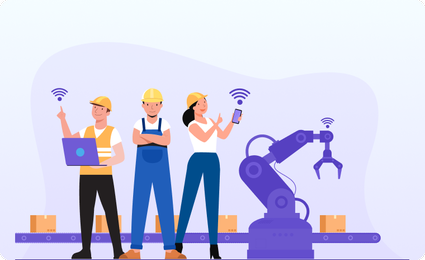
Established manufacturing companies are going through a transformation and turning to no-code tools for increased efficiency in the Industry 4.0 era.

Japanese-inspired management principles dominated manufacturing in the last century. Today's no-code tools pick up from where these ideas left off.

While picking a no-code platform, focus on a few relevant, high-impact features instead of picking the platform with the flashiest interface.

Listening to CEOs of various no-code platforms can be inspiring. Here are some notable episodes to check out.

A list of four main personas among no-code users and their motivations, followed by recommendations as to possible platforms that would fit their needs.

This piece clears up five of the myths surrounding the no-code technology and provides a realistic summary of what to expect from no-code platforms.

What role can no-code play in bridging the gap in the demand for and supply of developers? Find out in this blog post.
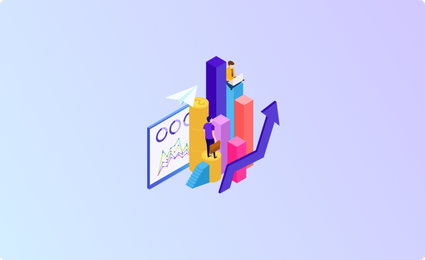
Our previous blog post was about the potential of the no-code movement to democratize software development. However, there is more to the story.

New technologies often promise to revolutionize industries. No-code platforms aim to democratize app development and the software industry.

A post on how startups and SMBs can use no-code tools like Peaka to expand their businesses, simplify processes, and reduce human error.

This piece offers an introduction to low-code and no-code, helping readers identify LCAPs and NCAPs, such as Peaka, on a spectrum.

No-code is here to stay due to technological advances, rising developer salaries, tech-savvy newcomers to the workforce, and the pandemic.

Finding a technical co-founder is hard. But if you can't convince at least one person to build your product, then why bother at all?
Meet our experts to explore the whole range of capabilities Peaka offers.
To help us understand your needs and how we can assist, please fill out our contact form. Our team is ready to listen and address your specific challenges.